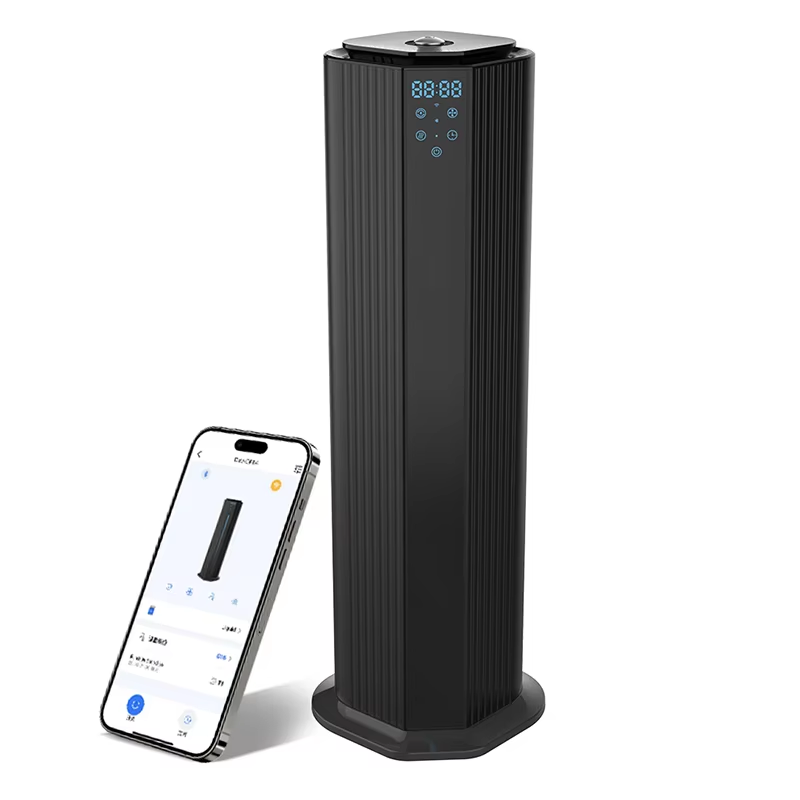Pendahuluan
Kerana minyak ubat alami mempunyai kesan terapi, penyebar aroma telah mendapatkan kepopularan yang lebih besar baru-baru ini untuk mempercantik persekitaran tempat tinggal kita. Ini menyebarkan molekul wewangian di udara yang menghasilkan bau harum untuk memenuhi ruang, serta aksesori. Dalam artikel ini, kami akan cuba mengeksplorasi apa jenis-jenis penyebar aroma dan bagaimana mereka berfungsi, kelebihan dan kekurangan mereka untuk membantu anda menentukan sama ada ia sesuai untuk rumah atau tempat kerja anda.
Pengembang ultrasonik
Salah satu jenis yang paling biasa, penyebar ultrasonik melepaskan titisan minyak ubat menggunakan getaran frekuensi tinggi. Menyebarluaskan titisan-titisan ini melalui atmosfera untuk menghasilkan bau sejuk yang sedap. Mereka beroperasi secara sunyi, sangat efisien dalam penggunaan tenaga dan boleh juga digunakan dengan air bersama beberapa tetes minyak ubat. Ia menyebarkan dalam masa yang lebih pendek, oleh itu cenderung kepada endapan mineral dan memerlukan pembersihan secara rutin.
Pengembang Nebulisasi
Untuk teknologi yang lebih canggih, pertimbangkan penyebar nebulizer yang memecah minyak atsiri menjadi partikel ultra-halus dengan menggunakan tekanan udara saja—tanpa panas atau air. Ini menjaga integritas minyak, yang memberikan pengalaman aroma yang lebih murni. Keuntungan satu-satunya dari metode terapi ini adalah minyak murni yang utuh digunakan dan keberlanjutan yang sangat baik karena lebih sedikit minyak digunakan untuk setiap sesi. Di sisi lain, penyebar nebulizer lebih mahal dan dapat menghasilkan suara yang cukup keras ketika menguapkan.
Penyebar Panas
Penyebar panas bekerja dengan memanaskan minyak atsiri untuk menyebarkan komponennya. Ia dikenali kerana projeksi kuatnya dan kelembapan yang cepat. Kelebihannya adalah anda boleh dengan cepat memberi wewangian kepada bilik dan menggunakan lebih banyak minyak. Namun, terdapat juga kebimbangan mengenai degradasi minyak (dari panas) dan masalah keselamatan di mana penyebar ini boleh menjadi panas semasa beroperasi.
Pengedap Penyiasatan
Penyebar evaporatif menarik udara melalui pad yang direndam dengan minyak atsiri, melepaskan aroma ke dalam udara. Penyebar ini sangat baik kerana memerlukan pemeliharaan yang sangat sedikit dan berjalan secara konsisten sepanjang masa, yang bermaksud kurang pengisian semula untuk tempoh yang panjang. Namun, pada sisi negatifnya, ia tidak membenarkan pengawalan kepekatan wewangian dan boleh mencemari air jika dibersihkan secara rutin.
Penyebar Wick
Penyebar wick adalah jenis penyebar yang mudah, murah dan asas. Dalam prosesnya, mereka mempamerkan reka bentuk tanpa elektrik yang mudah untuk dioperasikan; hebat untuk kawasan kecil atau perjalanan. Penyebar wick - murah tetapi pengalaman yang berubah-ubah dan umur lebih pendek berbanding dengan yang lain.
Kriteria pemilihan keselamatan negara dan perbandingan
Kekosongan di sini adalah dalam perbandingan dan perbezaan antara ciri-ciri dan prestasi mereka, jadi secara semula jadi anda perlu mengambil kira apa yang anda suka dengan penyebar aromaterapi yang akan memenuhi budjet anda berbanding kekuatan wewangian yang diperlukan untuk ruangan yang ada atau yang memerlukan penyelenggaraan paling sedikit. Penyebar ultrasonik dan penyebar penguapan biasanya lebih murah dan sesuai untuk kawasan yang lebih besar, manakala penyebar nebulizer memberikan pengalaman aroma yang lebih murni dan terkonsentrasi dalam ruang yang lebih besar dengan julat harga yang lebih luas. Penyebar wayar adalah pilihan yang sempurna untuk segar udara yang murah dan mudah penyelenggaraannya.
Kesimpulan
Penyebar aroma Final Take hadir dalam pelbagai jenis dan setiap jenis mempunyai kelebihan dan kekurangannya masing-masing. Apa pun pilihan anda, mengetahui perbezaan di antara semua jenis akan membantu anda mencari penyebar yang sesuai dengan keperluan aromaterapi anda: bilik senyap, hemat tenaga, atau pengalaman minyak essensial yang paling murni. Jadi sekarang semak semua pilihan yang ada dan anda akan segera menuju kepada tempat yang wewangian di rumah atau pekerjaan.

